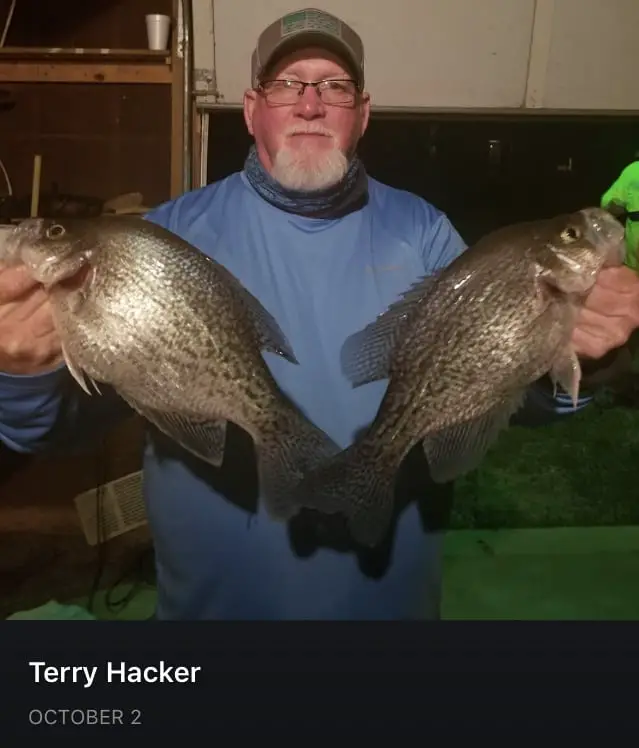Table of Contents
There is no debating the fact that crappie is a fun species to try to catch every time you are out on the water. First of all, they put up a good fight, and so if you love a decent challenge, this is definitely the fish for you. Additionally, this isn’t a large fish at all, so it won’t put a strain on your equipment much at all. Finally, if you have decided that you are going to eat what you catch, this fish is truly one of the best.

Many anglers feel that this species tastes totally fantastic. Of course, if you are now sold on trying to catch crappie, you will need to understand a little bit about their anatomy. There are a lot of dominant questions that beginning crappie fishermen might have, and one of the most major ones would be this: do crappie have teeth?
Here are some good hooks for crappie fishing. size 8-12 is great!
Are you seriously looking turn your hobby into a business? I recommend joining Income School. I’ve been an Income School member for a little over a year and joining was the best decision I’ve made in working toward my business goal of making money online.
The answer to that question is yes, but it’s a bit more complicated than what you might think. Yes, crappie have teeth, but unlike other fish, they have a difficult time using them to chomp down on their prey. Thus, their method for eating their prey is a bit different than other species of fish. They will usually take advantage of their powerful suction muscles and suck the food inside their mouths instead.
Their jaws, teeth, or mouth membranes just aren’t strong enough for them to do it any other way. But anyway, let’s dive a little deeper into it. Here are some extra facts regarding the crappie’s teeth:
In order to understand the teeth of the crappie, you first have to understand the position of their mouth.
First of all, the crappie come in two different subspecies, the white crappie and the black crappie. Both of these types have what is called a terminal mouth position that is composed of teeth that are very small and conical. They are also positioned in a couple rows along the mouth. Generally, most experienced anglers will not even refer to what the crappie has as teeth. They often will call them cardiform, because in all honesty they resemble a tool for wool carding more than just regular teeth.
Of course, wool carding is the process of disentangling various items such as removing various impurities from a fiber. That’s about the best analogy that one can use for crappie teeth. Are they good for disentangling things? Sure. Would a crappie’s set of teeth be good for being a serious predator like bass or trout? Not so much.
You will need to fully understand the shape of the crappie’s teeth as well.
As mentioned previously, a crappie’s set of teeth comes in two rows, and they are small and conical. Naturally, you need to understand what this means for you when you are fishing for them. First of all, because the teeth of the crappie are somewhat limited, it means that you have much more leeway with them than you would with other species.
For example, this even impacts how you can handle the crappie. You can start by inserting your thumb into the mouth of the crappie and clamping down on the lower jaw of this species. This not only works because of the limited teeth design of the crappie, but also because they have a larger mouth than other species.
This also impacts what the crappie feeds on.
Because of their smaller teeth, it definitely impacts what the crappie can feed on. However, you shouldn’t think for a minute that this doesn’t mean they don’t have a fairly diverse diet. Crappie will often feed on many different smaller species of fish, and they will even take a crack at the young of their predators, such as Walleye or Northern Pike. Perhaps not surprisingly, the crappie will also feed on zooplankton, insects, and crustaceans.
Finally, the crappie’s teeth definitely impacts how you should fish for them.
Like other fish, it is often best to fish for crappie during the spawning season simply because there are usually a lot more of them during this season and you could possibly get a bigger haul. However, the similarities take a bit of a detour after that. If you take into account the crappie’s teeth structure, then you should include the following strategies in your crappie-catching endeavors:
If you have social media or a blog or even a business in fishing like a fishing guide, you can make money by giving away $10 store credit to your friends and followers. Click Here to find out how
Go with live minnows.
Because of their small teeth structure, there is no question that live minnows are very popular with crappie. You can often get a live minnow and include it underneath a cork and then simply cast it out and wait for a bite. Of course, live minnows are often the best choice for bait, but it does depend on your individual circumstances. There are some who have had some luck going with artificial minnows as well.
Consider using jigs.
There is no question that live minnows will continue to be the best bait to use. However, besides artificial minnows many anglers have found plenty of luck with jigs. The beauty of using a jig is that they are often easier to handle than live bait. Moreover, you might want to consider jigs when you are fishing in a brushy area with a large crappie population.
Try changing up the color of your jigs.
If there is any advantage to using jigs, it would have to be that they are available in a variety of different colors. They give you the option to use several different colors to allow for the different depths of the water. On the other hand, live minnows might be great, but they do only come in one color. Either way, if you are considering adding jigs to your arsenal, you should make sure you have a variety to increase your chances of landing more crappie.
You might want to think about changing up your fishing pole.
Another reason for taking into account the incredibly small teeth of the crappie would have to be because it impacts the type of fishing pole you should use. Of course, cane poles are usually the go-to option for crappie fishing, but you have to realize that crappie will bite very lightly simply because of those teeth. This is why you should consider spending a little extra to get a more sensitive pole made out of graphite or carbon-fibre.
However you slice it, if there is anything we can learn from the crappie, it would have to be that fish anatomy DOES INDEED affect how we can fish for them. Keep that in mind every time you are casting out for them!
Hey FISHMONGER – make sure to check out my FISHING RESOURCES page.

